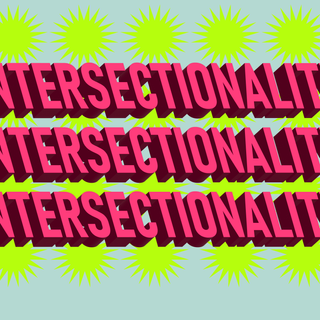
Move Over ‘Trigger Warnings’ – ‘Mood Spoilers’ Are Here to Save the Day Now
While trigger warnings reveal the subject of a piece of content, mood spoilers prepare people for how their minds may respond to it.

“Trigger warnings” had started out as a well-intentioned tool to avoid unintentionally triggering people’s trauma. It was conceived in a bid to signal empathy to survivors of trauma, while also alerting audiences to potentially distressing content. But soon, they became an instrument of virtue-signaling — especially so, since their effectiveness wasn’t just under-researched and unproven, but also repeatedly questioned by many experts. But before netizens could even get on the same page about the value of trigger warnings in online discourse, “mood spoilers” — seemingly a close cousin of trigger warnings — have emerged as the internet’s new savior.
We know as much about the effectiveness of mood spoilers as we did about trigger warnings: little to nothing. Yet, in subreddits like r/BestofRedditorUpdates, they feature frequently. Often, they’re accompanied by trigger warnings — reminiscent of new hires who are instructed to shadow the individuals whose responsibilities they’d soon be taking over. Some posts, in fact, omit trigger warnings and include only mood spoilers.
Trigger warnings include a brief description of the kind of traumatic memories — like death, sexual assault, domestic violence — it can provoke in people. Mood spoilers, on the other hand, signal the emotional response that the content might elicit — basically, whether it is going to be “frustrating” to consume, or whether its ending will feel “hopeful” or “vindicating.” Basically, trigger warnings reveal the subject of a piece of content; mood spoilers prepare people for how their minds may respond to it.
Outside of Reddit, mood spoilers aren’t too popular; even within Reddit, they’re only beginning to gather steam. However, the concept of mood spoilers — irrespective of its modern nomenclature — isn’t new. Before picking a movie to watch on a weekend, one might Google it to check whether it’s a comedy, a tragedy, or a romantic drama — in a bid to understand what they’re signing up for. That’s precisely the purpose that mood spoilers serve, too.
Related on The Swaddle:
The Pressure To Always Say the ‘Right’ Thing Affects the Way We Communicate
One of the merits of trigger warnings is that they introduce the element of consent to the kind of content one chooses to engage with — bolstering the culture of consent in a society where people’s boundaries are routinely trampled upon, both online and offline. To that extent, mood spoilers lend further support to the discourse on consent while allowing people to click on content that they may otherwise have scrolled past, disturbed by its description.
A fitting example, here, would be this — a post marked with a trigger warning for infidelity, followed by a mood spoiler about the ending being a happy one. An individual who has been cheated upon may decide to engage with the post, simply to feel vicarious vindication based on the mood spoiler. In a way, then, by making space for more information, mood spoilers can enable people to decide whether or not they want to heed a trigger warning.
At the same time, however, if an individual has turned to social media to briefly escape the depressing realities of living in a post-pandemic world — as people often do — a mood spoiler can serve as an important roadblock to a post that might’ve otherwise served only to pump up their frustration. Say, they come across a post about an attempted sexual assault and aren’t dissuaded by the trigger warning since the subject isn’t triggering to them. However, given that it includes a mood spoiler informing audiences that the story doesn’t end on a positive note, they could choose to steer clear of it before investing their time engaging with the narrative.
Both trigger warnings and mood spoilers, then, exist as tools that enable audiences to make informed choices. The problem arises when their usage is enforced as a modern form of moral policing in the era of the cancel culture. However, despite being an intrinsic part of “woke”-social scripts, trigger warnings are merely performative devices. In fact, their usage can actually be “invalidating” to trauma survivors who are told, over and over again, that the warnings are helping when, in reality, they aren’t. Not only that, a 2018 study concluded that trigger warnings amplified the anxiety people reported in response to distressing material; a 2021 paper noted how they could prolong the adverse impacts of recalling painful memories by telling our brains to expect something negative and, in doing so, worsen the distress we feel. Meanwhile, the research that does suggest trigger warnings may be able to help, admit that they do it only marginally.
Related on The Swaddle:
Why the Trend of ‘Trauma Dumping’ On Internet Strangers Needs to Go
Yet, in a culture where people are rewarded for being performatively woke, they have caught on. This isn’t to say that everyone who uses trigger warnings and mood spoilers is a performative woke-baiter. Instead, the popularity of the device reflects a plethora of human motivations and urges: being respectful of the life experiences of fellow netizens and being inclusive of them, mindlessly replicating a trend, and, of course, the fear of being canceled.
Many organizations and news outlets have begun simply labeling content with the term “trigger warning” without defining the triggers. As Rohitha Naraharisetty wrote in 2022, “[W]hen information is preceded by a warning without any mention of what to expect — a trigger warning for its own sake — it’s arguably even worse. This assumes that the information is safe only for people with no trauma [which is an almost non-existent demographic], and nothing that could possibly trigger them.” This goes on to show just how willing people are to embed scripted responses into their online conversations without much heed to their effectiveness. It’s not too far-fetched, then, to assume that the usage of mood spoilers could soon become the new litmus test for woke-ness.
It is both appropriate and critical to hold space for vulnerable communities. But often, we lose sight of that objective to build our own social capital — alienating survivors of trauma and bullying individuals who may not agree with our definition of woke-ness. One can only hope, then, that if mood spoilers do catch on and succeed trigger warnings, it’s only after due research into their effectiveness.
As Payton Jones, a data scientist with a degree in experimental psychopathology had said: “From a clinical lens, you should never do anything that doesn’t work, period, even if it doesn’t do harm. If it’s not actively helping, encouraging its use would essentially be engaging in clinical pseudoscience.”
Devrupa Rakshit is an Associate Editor at The Swaddle. She is a lawyer by education, a poet by accident, a painter by shaukh, and autistic by birth. You can find her on Instagram @devruparakshit.
Related


How Vidya Balan’s Celebrity Has Defied the Idea of the ‘Fashion Police’
